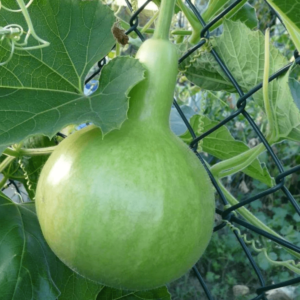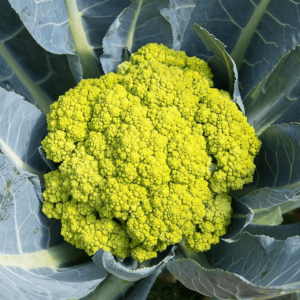Oregano Seeds
- Brand: Plantozia
₹35.00₹199.00 (-82%)
1 in stock
- Packet contain: 1-Pack Seeds
- Sowing season: Early Summer.
- Mode of showing: Directly sow seeds or transplant seedlings in pots.
- Germination Time: 7-14 days from showing.
- Harvesting: Oregano seeds are ready for harvest in 8–10 weeks after planting.
OREGANO SEEDS GERMINATION PROCESS
Soaking 5-6 hours in the water For Better Results :
Soaking seeds in water before planting can help speed up germination by softening the outer seed coat, allowing water and air to penetrate the seed more easily. This can help to trigger the biochemical processes that lead to the germination of Oregano Seeds.
Use 50% Compost & 50 Soil:
Using a mixture of 50% compost and 50% soil can provide an ideal environment for seed germination. Compost provides organic matter and nutrients that can aid in the growth of the seedlings, while soil provides a stable base for the roots to anchor and absorb water and nutrients. It is important to ensure that the compost used is mature and free from any harmful pathogens that may damage the seeds or seedlings. Additionally, it is recommended to provide the seeds with adequate sunlight, water, and temperature for optimal germination Of Oregano Seeds.
Do not Overwater:
Use well-draining soil. Soil that doesn’t drain well can lead to waterlogged roots, which can cause root rot and other problems. Check the soil moisture level regularly. Stick your finger into the soil about an inch deep. If the soil is dry, it’s time to water. If it’s still moist, hold off on watering.
After 2-3 Months Enjoy Your Vegetable :
Apply vermicompost twice a week Depending on the size of your plant, apply a small amount of vermicompost to the soil around the base of the plant twice a week. It is essential to avoid over-fertilizing, as this can lead to plant burn or root damage Oregano Seeds.
OREGANO SEEDS SPECIFICATION
| Common Name | Oregano Seeds, Jungli Marua, Ban Tulsi, Kedar Tulsi. |
| Height | 1 to 3 feet |
| Harvesting Time | 8-10 Weeks |
| Bloom Time | Early Summer |
| Difficulty Level | Easy to grow |
GROWING OREGANO PLANTS IN POTS :
Growing Oregano in a pot in the Indian climate can be a rewarding experience. Here are detailed guidelines to ensure successful growth and care for your Oregano plant:
- Choosing the Pot: Use medium-sized containers with good drainage holes. A pot around 8-10 inches in diameter is ideal, as the plant doesn’t need deep soil but appreciates space to spread horizontally.
- Soil Mix: Opt for a well-draining potting mix that mimics the plant’s natural environment. A combination of regular potting soil mixed with sand or perlite works well. This ensures the roots don’t stay waterlogged, which the plant dislikes.
- Sunlight Requirements: Place the pot in a sunny location. The plant thrives in full sun, needing at least 5-6 hours of direct sunlight daily. In India’s hot summers, it can also tolerate some partial shade during the peak afternoon heat.
- Watering: Water sparingly, as this plant prefers drier conditions. Allow the top inch of soil to dry out between waterings. Overwatering can lead to root rot, especially in humid climates. Water early in the morning for best absorption.
- Temperature: This plant prefers warmer climates and can handle the heat typical of Indian summers. However, in regions with extreme temperatures, it’s beneficial to provide some shade or move the pot indoors during the hottest part of the day.
- Humidity: While the plant enjoys a warm climate, it doesn’t thrive in very humid conditions. If you’re in a region with high humidity, ensure better airflow around the plant to avoid fungal issues. Position the pot in a well-ventilated area.
- Fertilization: This plant is low-maintenance when it comes to feeding. A light application of a balanced, organic fertilizer once a month during the growing season (spring through summer) is sufficient. Avoid over-fertilizing, as the plant prefers lean soil.
- Pruning: Regular pruning helps maintain a bushy, compact shape. Trim the tips regularly to encourage lateral growth. Pruning also helps remove dead or leggy parts, keeping the plant healthy and vigorous.
- Pests and Diseases: While generally resistant to most pests, you may occasionally encounter aphids or spider mites. Use organic pest control methods, such as neem oil sprays or soap solutions, to keep these in check. Ensure proper spacing and airflow to prevent fungal infections in humid conditions.
- Repotting: Every couple of years, consider repotting the plant to refresh the soil and give the roots more room. Choose a pot one size larger or divide the plant if it has outgrown its space.
- Harvesting: The plant’s leaves can be harvested once the plant is mature, usually a few months after planting. Regular harvesting encourages new growth. Snip the leaves or stems, ensuring you don’t remove more than one-third of the plant at once to maintain its vitality.
- Winter Care: In colder regions of India where temperatures drop significantly, bring the pot indoors or cover the plant during the winter months. This plant doesn’t tolerate frost well, so it’s best to protect it during cold spells.
- Propagation: The plant can be easily propagated from cuttings or by layering. Take a cutting, remove the lower leaves, and place it in moist soil until it establishes roots. This is a simple and effective way to expand your garden.
By following these steps, you’ll successfully grow a healthy, aromatic plant that’s well-suited to Indian conditions.
Additional information
| Weight | 0.1 kg |
|---|---|
| Dimensions | 5 × 5 × 5 cm |
Only logged in customers who have purchased this product may leave a review.













Reviews
There are no reviews yet.